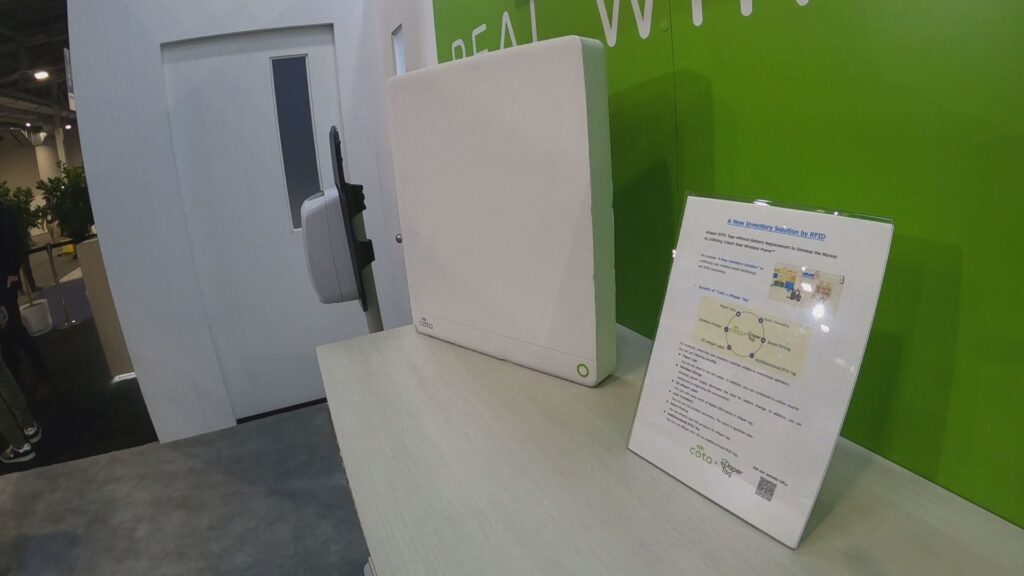- Home
- The Latest
- Yes, you can charge a phone th ...

What’s the one thing holding back smart home technology? Batteries. Whether we’re talking about the battery in your smartphone or Bluetooth headphones or the batteries in your smoke detector, they all need charging. Smartphones need charging at least once a day.
What if those devices did not need to be plugged in or placed on charging hubs to be charged? What if they always stayed charged through the air?
Two companies I saw recently at CES, say they can do it and the technology is already here.
You walk into a room in proximity to a Cota transmitter and your devices will be powering.”
“It’s wireless power,” explained Jennifer Grenz from the company Ossia, maker of the COTA wireless transmitter. “Just like WiFi. You walk into a room in proximity to a Cota transmitter and your devices will be powering.”

I first saw Ossia 6 years ago at CES, showing off ceiling tiles with wireless charging devices built-in. The idea was retail outlets, airports, and other public places could install the tiles and wirelessly charge the phones of anyone nearby. This year, COTA transmitters look more like mesh WiFi routers that sit anywhere in your house that can charge batteries in just about everything.
“You have security cameras, motion sensors, temperature sensors, or that pesky AA battery that chirps at you in the middle of the night,” said Grenz. “You put the Cota circuitry in that battery in your smoke detector it will never chirp at you again.”
PowerCast is another company that developed a $5 chip that can be embedded in devices by manufacturers.
“We have our transmitter devices here,” demonstrated Eric Biel. “They’re putting RF energy into the air and converting it efficiently into DC power that can be used to recharge batteries.”
On the PowerCast display table, two small transmitters that look a lot like Bluetooth speakers, invisibly sent the RF signals into the air while strips with a light and the PowerCast chip lit up on the table. Biel explained it was merely a demonstration of how those chips can recharge and provide power to any device.

He specifically mentioned smart assistants such as a Google Home device, game controllers, wireless speakers, and earbuds. In a real-world example, Biel showed me a transmitter that would look rather handsome plugged into a bathroom electrical outlet to power those everyday gadgets we use. “A toothbrush, a water pick, maybe a shaver and you’ve got cords plugged in, it’s annoying,: he said. “You plug this in your bathroom all your devices just sit there. no more charging bases, no more cables running everywhere, and your devices just wirelessly recharge without any intervention on your part.”
PowerCast hopes to work with device manufacturers to include the chip in future products.
So how close are we to seeing totally wireless charging In our homes?
“I think you’re going to start finding these in homes at the end of this year and early next year,” said Grenz. Adding, “We are shipping a security camera bundle where you will get 3 to 10 cameras depending on how large your space is. you’ll get a Cota transmitter and you just take that camera and stick it up on the wall, and when you’re ready to move it, you can move it and there will be no wires. It’ll be constantly powered.”
Both companies say their products are tested, proven, FCC certified, and are completely safe.

